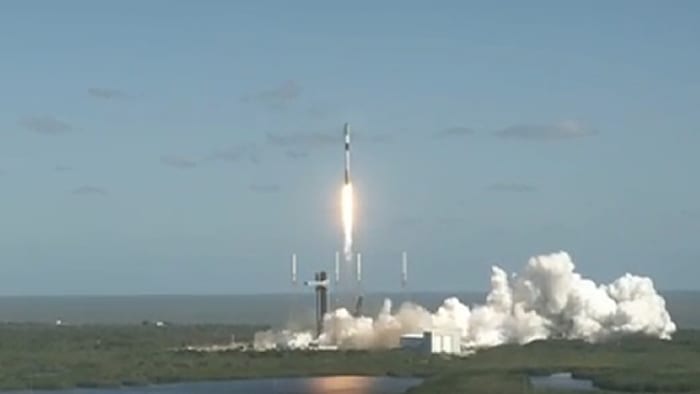
BREVARD COUNTY, Fla. – SpaceX is poised for another significant rocket launch from Florida’s Space Coast, marking a crucial step in its ongoing partnership with NASA. The Falcon 9 rocket is scheduled to lift off from Space Launch Complex 40 (SLC-40) at Cape Canaveral Space Force Station, carrying Northrop Grumman’s Cygnus XL spacecraft on its NG-23 mission to the International Space Station (ISS).
The launch is set for 6:11 p.m. on Sunday, with a backup window available on Monday at 5:49 p.m. This mission will deliver over 11,000 pounds of essential cargo to the ISS, including scientific experiments and supplies. Among the notable items are materials for semiconductor crystal production in microgravity and equipment aimed at enhancing cryogenic fuel tank technology.
Mission Details and Objectives
According to NASA, the Cygnus mission is a vital component of ongoing research efforts aboard the ISS. The delivery includes a range of scientific and research materials designed to advance our understanding of space environments and their applications on Earth.
“This mission represents a significant step in our collaborative efforts with commercial partners to utilize the ISS for groundbreaking research,” said a NASA spokesperson.
This launch will also mark the fourth flight of the Falcon 9’s first stage booster, previously used in missions such as Ax-4, Crew-11, and a Starlink deployment. Following stage separation, the booster is expected to return to Landing Zone 2 (LZ-2) at Cape Canaveral Space Force Station.
Recent Launch Activities
SpaceX’s upcoming launch comes on the heels of a successful deployment of a telecommunications satellite from the same location, following several delays. This recent activity underscores SpaceX’s growing role in both commercial and governmental space operations.
These launches are part of a broader strategy by SpaceX to maintain a high cadence of missions, supporting a variety of clients and objectives. The company’s ability to quickly turn around launch vehicles is a testament to its operational efficiency and technological prowess.
Historical Context and Future Implications
SpaceX’s collaboration with NASA on the Cygnus missions is part of a long-standing effort to leverage commercial partnerships for space exploration. This approach not only reduces costs but also accelerates technological advancements through competitive innovation.
Historically, the ISS has served as a hub for international cooperation and scientific discovery. The continued supply missions are crucial for maintaining the station’s operations and facilitating experiments that could have far-reaching impacts on technology and medicine.
By the Numbers: Over 11,000 pounds of cargo, fourth flight of the booster, two potential launch windows.
Looking ahead, the success of these missions could pave the way for more ambitious projects, including potential manned missions to the Moon and Mars. As SpaceX continues to refine its technology, the possibilities for space exploration and commercialization expand significantly.
ClickOrlando will provide a live stream of Sunday’s launch, offering viewers a front-row seat to this exciting event. As SpaceX and NASA continue their partnership, the world watches in anticipation of what the future holds for space travel and exploration.





